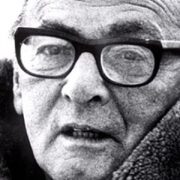 Being an actor means having a lot of downtime when you’re off set, not on stage, and not in an acting class. If you’re already reading acting books, making sure you’re improving your chances in the acting business, and doing everything else to progress, you can also try some exercises and games to further develop your acting skills.
Being an actor means having a lot of downtime when you’re off set, not on stage, and not in an acting class. If you’re already reading acting books, making sure you’re improving your chances in the acting business, and doing everything else to progress, you can also try some exercises and games to further develop your acting skills.
The below mentioned acting exercises and games may be done by yourself, but many would be more fun doing in groups. So if you have any actor friends and some time off, get together and try these out. The more actors play, improvise and let themselves go (get out of your head), the better actors they become. It’s pretty simple.
Surprisingly, there are a lot of ways to let yourself have fun, get yourself into the state mind of a child and develop your acting skills. In this article you will find our top 15 exercises and games that will have your acting chops challenged.
Most of these techniques, acting games and exercises were created by, and are still use by drama teachers and in drama schools.
RELATED: 50 Best Acting Tips From Actors and Directors Who’ve Finally Made It
15 Games & Exercises to Improve Acting Skills
These Are Taught In Drama Schools
1. The Man on a Bus Stop
This exercise is aimed to develop your imagination. Developing imagination is one of the most important components of actor’s success In order for the audience to believe your acting, it’s you who has to believe first that the life of your character is real. And to do that, you need to be able to build a small world of your character’s life in your mind.
Even just for one scene, you have to come up with answers of why you are doing, what you are doing, why is it that way, etc. That’s exactly what your imagination is for. You should work on developing your imagination as often as possible. It is useful for mastering acting skills, but also it is so much fun to live having a good imagination!
Description of the exercise: This exercise can be done both individually and in a group. If you are doing it individually, then you just need to go outside and look at passers-by, people in the queue, on a bus stop, etc. and start to make assumptions about them: profession, hobbies, marital status and anything else.
Don’t try to guess, just fantasize! If you are doing it in a group, then just take turns and do the same thing, – make assumptions about your partners.
2. What Were They Wearing?
This exercise is aimed at developing attention. Attention is very important for an actor as well, as you have to pay attention to every detail of other people.
Also, it is very difficult for a beginner to play an emotion or a state that he/she has never experienced. But if your attention is well developed, you can always recall the observations about the people who have experienced the desired state or emotion.
Description of the exercise: This exercise can also be done both individually and in a group. In a group: People sit in a circle and they are given 5 minutes to remember who was wearing what. It’s important to remember all the details of clothing, accessories, hairstyle, etc.
After 5 minutes, they turn, and the host of the game begins to ask questing like these: “Anna, tell me, please, what was Helen wearing?.”, “John, what was the color of Anna’s shoes?”, etc. At the end, everyone turns back and checks the answers.
If you are doing it individually, then just do it with your family members or strangers. Just close your eyes and try to remember every detail.
3. Mnemonics
Human memory is a tool that can be developed and trained, regardless of the initial indicators and the age at which this development begins. The idea of mnemonics is that our memory stores images and pictures very well. It allows you to convert any information to some image, so you can easily remember tables, large series of numbers, new languages, etc.
Description of the exercise: There is not much difference if the exercise is done individually or in a group. If individually, then the person simply writes down 20-30 unrelated words. If in a group, – someone asks each participant to name a few words and write them all.
Then, the words are read several times, first, it should be a slow reading with one picture – association about each of the words. Every following word, or rather its image, has to have some connections with the previous images.
For example, if you have words “plane”, “door”, “elephant”, then, the assosiation may be an image of a plane that crushes into the door and there is an elephant sitting behind that door. At the end, you will have your first “movie” script ready to be filmed!
4. The Chair
It’s another exercise that is aimed to develop actor’s imagination. It is a very simple exercise, where all of the participants sit around one chair and have to come up with 40 (in total) ways of how someone can make a chair (make it of a tree, put a box, etc.).
After participants come up with 40 ideas, they choose another object and continue doing the same thing with it. If you are alone, you can always do it yourself; however, it’s much harder and can soon become a bit boring.
5. The “Machine” of emotions
Showing emotions on camera or on stage can be very hard for some beginners. This “Machine” of emotions is a mechanism in your imagination, composed of elements associated with the desired emotion.
Description: Take one emotion – “anger”, then take a sheet of paper and write down situations that make you angry. For example, noisy neighbors, strict parents, a lot of homework, wrong haircut, etc. Then, with every situation you need to come up with some image (noisy neighbors – speakers, strict parents – a belt, etc.).
Then, you connect together these images on the sheet of paper and at the end you will have the “machine of anger.” Do the same thing with many other emotions and when you need to act them, you can always take this “machine” and recall all of those images that make you angry, happy, irritated etc. These images will help you quickly get the desired emotion.
6. “Role model”
It’s good for young actors to have role models. There are so many wonderful actors nowadays, that the only thing you have to do is to open a scene from any of their movies on YouTube and start to imitate their speech, pose, gestures, voice and emotions.
It will be very hard at first, but the more you practice the better you’ll do it. Of course, it’s impossible to copy everything, but try to pay attention to all details.
7. The Roles
Remember in the first exercise we advised you to think of possible professions, hobbies of people on the street? Now you have to come up with ideas why the person on a bus stop or anywhere else is in his current state (think of emotions, words and gestures).
For example if you see a person who is smiling, try to think of possible reasons why he is doing it:
- He got a new well-paid job.
- His wife has just told him that she is pregnant.
- He watched a very funny movie.
- He is excited about going home.
- He won an award.
- He is thinking of someone he loves.
- He has just booked a trip to Las Vegas.
8. The Change of Roles
This exercise is one of the easiest ways to make your acting more lively and diverse. Different roles require different intonation, gestures, emotions and energy. Once you get used to acting different roles, you can easily change the nature of your speech and the shape of the material.
In this exercise, you will be asked to try acting 5 very different from each other roles. Then you’ll be able to expand the list of such typecasting.
- A very boring lecturer
- Gypsy
- Pensioner
- Angry boss excoriate.
- Charismatic leader
Your task is to get the first role and improvise it for 40-60, and then switch to the next one and so on. Make sure you stay in each role for at least 40 seconds to work out not only the skill of entering into the character, but also the ability to stay in it for a long time.
Once you have played all 5 characters, your partner who has been observing you all this time, evaluates you (from 1 to 10) and gives you a feedback. Together you should come up with ideas of how to improve your acting. Once you get 10 points for each role, you can choose some new ones.
9. Non-stop
In this task you will have to present a monologue on some topic for 3 – 5 minutes without any stops or time for preparation. You should try to avoid any pauses and your speech should sound like you’ve been preparing it for a long time.
At first choose the topics you are familiar with, then move on to the once that you hardly know anything about. This exercise will help you to develop you skills of improvisation.
11. Interview
It is another exercise aimed to develop your skills in improvising. Ask one of your colleagues (it would be great if it’s not your friend) to prepare a list of questions for you. The questions should be very personal and unexpected and should require a detailed answer.
Try to answer questions as fast, clear, detailer and confident as possible and also try to be very emotional and use a lot of gestures. Then, ask your interviewer for a feedback. Do the same thing a week later with another interviewer.
11. “Words starting with….”
When you are alone in your room and you have some free time, use this exercise as a way to develop your skills in concentrating on details.
Choose any letter “A, B, C, D, E ….” and by looking around try to find objects in your room that start with that particular letter.
You will only have 60 seconds to do that and coming up with 50 objects is a very good result, but whenever you find 100, then you are a real master of this game.
12. Games
It is essential for actors to cleverly use their bodies on stage and mime (a performance art involving the acting out of a story through body motions without use of speech) games are a very powerful way to improve your body language skills.
World famous games like Crocodile, Alias or Activity are aimed to teach you to use your body as a way of describing different objects, people or phrases to other people, so they can guess what it is.
These games are also so much fun to play even for those not interested in acting.
13. Mirror
How do children learn? They repeat what adults do! And repeating is one of the fastest and most effective ways of learning!
How can we enrich performance with different styles and extend the range of our speaking skills?
It’s very simple! Get a video of one of the speeches that you like and the style that you would like to adopt. Then, just try to say the same thing the way the speaker does. As soon as you like it the way you speak, turn to some other style and make sure to do this exercise at least 15 minutes at a time.
However, we advise you to take more than one speaker (four or five). By imitating one person, you are risking to become his/her “copycat”.
Take the best from every speaker, rethink it all – and create your own unique style.
14. Painting the Fence
This acting exercise is aimed at developing calisthenics of your hands. It is commonly used in theatres, where the members of the theater group all at once, or one by one, must do the following motions:
- paint an imaginary fence, as if their hand is a brush with paint
- touch an invisible wall (as if their palms and fingers are touching something);
- drag an invisible rope (for this exercise, the participants are divided into groups);
- row a boat.
15. Stroking an animal
This exercise should be done in a group, so take your friends and give everyone a sheet of paper with the list of animals in it (cat, elephant, hamster, dog and so on).
Each of the participants chooses an animal he/she likes and imagines holding and stoking it. The task of other participants is to guess which animal it is.
This exercise is often used in drama classes for beginners.
READ NEXT: Acting Exercises Using Observation





